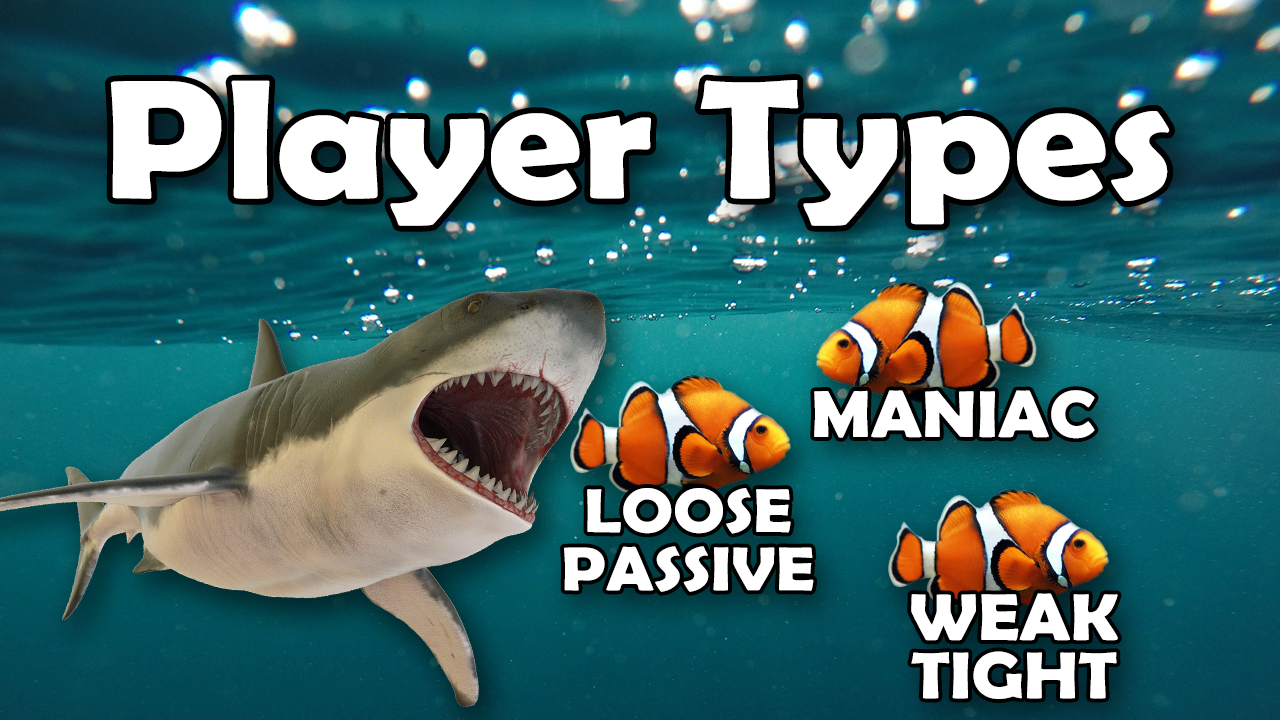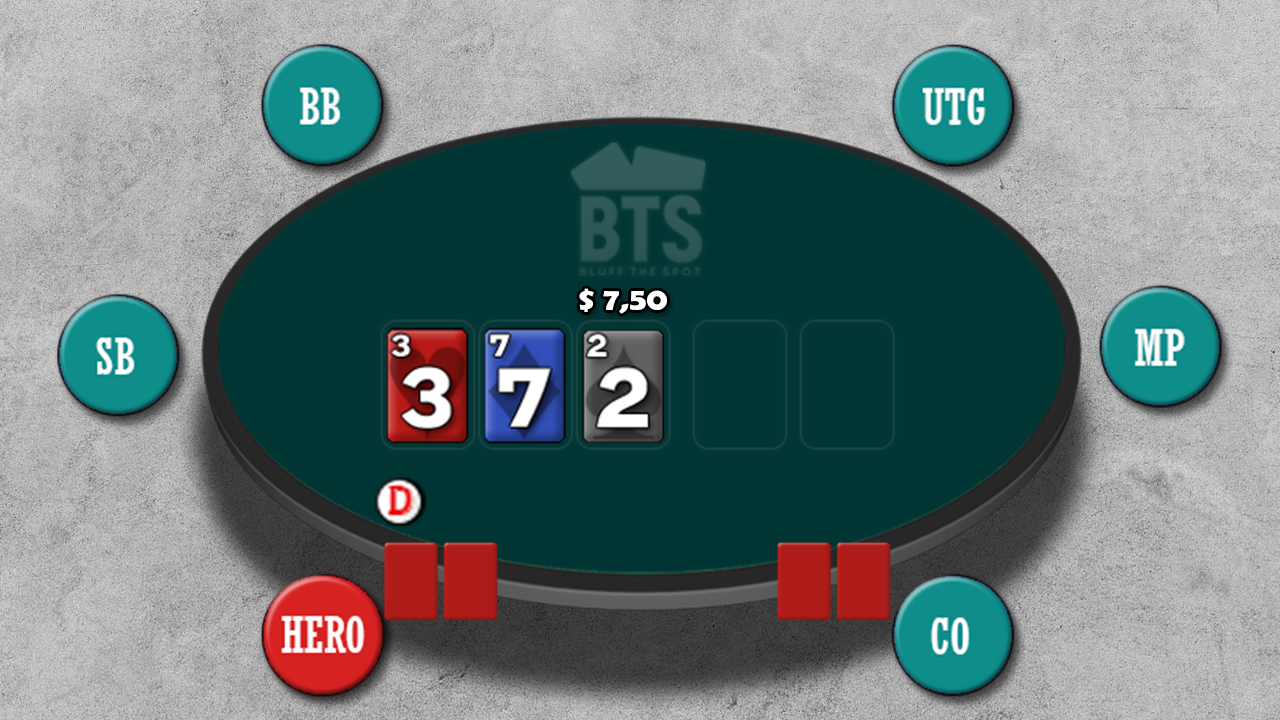Different types of recreational Poker players and how to exploit them correctly
Mar 16, 2020
There are a lot of discussions about GTO going on these days. At which stakes does GTO start to matter? Should you play an exploitative style, or should you play optimally?
At BluffTheSpot, our main goal is to turn our players into optimal player. But our definition of an optimal player might surprise you:
"An optimal player is someone who has a very strong fundamentally sound base while being capable of attacking his opponent's weaknesses."
Look: If you can play an optimal strategy, you will win in every line-up.
Sounds good? It is! But that's only half the story.
Because whenever you sit down to play poker, you want to get the most EV possible. Therefore, you should not only focus on table selection but also attack the weaknesses of other players. Now, attacking weaknesses has nothing to do with GTO. But it will increase your EV significantly.
It simply doesn't make a lot of sense to C-bet at an optimal frequency, while your opponent is overfolding to C-bets.
In this strategical article, I am going to introduce you to the three most common types of recreational players you find and teach you strategies to crush them:
The Maniac
Loose Passive
Weak Tight
How do you notice a recreational player on the table?
Now, before we dig deeper into the topic of player types, I want to explain the most common signs for a recreational player.

At this point, you don't have the necessary information to classify your opponent as one of the player types, but you already know that he is likely to be a weaker player.
Limping preflop
That's something you surely have heard before. But it still is the strongest sign for a recreational player: Limping Preflop.
No full stack
Another very common sign is a player who doesn't have auto top-up enabled.
As a poker player, you want to get the most value out of every hand. Therefore, you should always enable auto-top up.
Playing one table
If you are playing on a poker site that lets you search your opponents, do it! The number of tables a player is playing can be a good indicator to know if you are up against a regular or recreational.
Chatting
This is something you won't see very often, but if you do, it's most of the time a weaker player.
Why? Because regulars mostly play more than one table. So they simply don't have the time and focus on a chat.
Remember: Every time you aren't fully engaged, you lose money. Consequently, regulars don't waste their focus by chatting on the table. (If you are playing live, that's of course different)
Player name and avatar
This point isn't very reliable, but it can still give you an idea about your opponent.
Look for Screen names that relate to something outside of poker, rather than poker skills. For example: Someone with the name "messi87" is more likely to be concerned about things outside poker than someone who names himself "R4ngemaster."
The same thing goes for pictures. A player who has some kind of logo from a coaching site as his Avatar is way more likely to play solid than someone who is using (for example) a car.
The gap between VPIP and PFR
Of course, you can't use a HUD on every site anymore. But if you are allowed to use one, there is no better indicator for recreational players than a big Gap between the VPIP and PFR stat.
In general, you should look for a gap between ??-??.
Alright, those are the most common signs to spot a recreational player on your table. Let's move on and have a look at the types of poker players you will find:
The Maniac

As the name indicates, the maniac is pretty crazy. He likes to play a lot of hands, and when he does, he most likely comes in with a raise or a 3-bet. He also likes to bet on boards of all types and tries to win every hand he is involved in.
His leaks
His leak is his exaggerated aggression. He will often blow up the pot with marginal hands, and overbluffs tremendously.
How to play against the maniac player

You should rarely hero-fold against this type of player. Use his aggression and let him build big pots for you. You definitely have to widen your calling range against him and call him down with worse hands than you usually would, to exploit his over bluffing tendencies.
Biggest mistake vs. the maniac
There is one simple truth you have to keep in mind every time you play poker: Wide ranges hit the flop less often than narrow ones.
That's why a lot of players start fighting back against the maniac. DON'T FIGHT FIRE WITH FIRE.
As stated above, the maniac is crazy. He wants to win every pot and doesn't like to fold. Therefore, he will often come over the top, and suddenly you are forced to either lay down a hand that would probably have been best often or gamble for a huge pot. Avoid this spot by raising this opponent very thinly!
Seat selection
If possible, you should always try to have the maniac on your direct right. Why?
Because by having position on him, you will have an easier time handling his aggression.

Now, let's move on to another category of players, newbies find themselves in very often: The loose Passive player.
The Loose Passive Player

The easiest way to spot this player type is by looking for his VPIP and PFR stats. Players with a High VPIP (>26) and a Low PFR are usually loose passive folks. This type of player limps preflop.
His leaks
In contrary to the maniac, the loose passive player suffers from his lack of aggression. So he typically doesn't bet a lot, doesn't raise a lot, and calls too much.
Very often, this player type also has a fit or fold personality. This means that whenever he has hit a piece of the board, he will stick in the pot and calls down way too wide. And whenever he has nothing, he just lays down his hand when he faces aggression.
How to play against the loose passive player
Since he lacks aggression, he is the kind of player that rarely causes you troubles.
But this also means that you should be careful every time you see him betting or raising. The best way to exploit this passive tendencies is to bet big for value, and exploitatively overfold when he shows aggression against you.
But there is a mistake that a lot of people make against this player type, that you can avoid easily by paying attention to the next paragraph.
Biggest mistake vs. the loose passive
I want you to imagine the following situation:
You are sitting on the button, and you face an open-limp from your loose passive friend on the Cut-Off.
You decide to play your hand, so you raise to 3BB (2BB as a standard+1BB for the limper).
The Blinds get out of the way, but the CO calls.

The flop now comes:
3h7d2s
Your range doesn't hit. Now your opponent checks and the action is back on you, what do you do? Think about it and choose one of the following options:
Option 1: Check. Since you have absolutely nothing, it looks like a good idea to just check and control the size of the pot.
Option 2: You C-bet to get your opponent off his hand.
Very often, new students come up with the following thought process: "My opponent has a wide range and plays a lot of shitty hands. So he definitely hits this board more often than me. In conclusion, I should check."
While there is some truth to this thought process, it isn't complete because there two core elements missing:
Wider ranges hit the flop less often than narrow ones.
Recreational players like to play hands that look good to them.

So even if your opponent has a VPIP of 60%, that still means that he isn't playing 40% of his range. Therefore, he probably has a lot of weak Ax, Kx, Qx, and Jx in his range, and also a lot of suited combinations. But not hands like 52o or 74o.
In conclusion, he is missing the 3h7d2s flop very often. In conclusion, you should c-bet this board almost always against this fit-or fold player, regardless of your hand. You will often take down the pot right away and prevent him from hitting a hand on the turn.
Seat Selection
The Jesus seat against this player type is directly to his right. This gives you the possibility to isolate him and squeeze out more money.
The weak tight player

You realize that you are up against this player type by paying attention to his VPIP and PFR stat.
Most of the time, he has quite nitty stats, like a VPIP of only 10. However, he often won't have a big gap between his VPIP and PFR.
His leaks
The biggest leak of the weak tight opponent is not only that he is playing too few hands to maximize his profits, but also that he plays very bad post-flop.
Consequently, he isn't as aggressive as he should be and rarely bets and raises. He also often overfolds tremendously against C-bets.
How to play against the weak tight player
Since he is not betting enough, it doesn't make sense to try and check-raise him. Hence you should take over the betting yourself and try to get him out of pots by C-betting more than you normally would.
He is the only type of recreational player that you should bluff.

Biggest mistake vs. the weak tight
The biggest mistake you can make against this player is not to exploit his overfolding tendencies. Very often, it is true that you should not bluff recreational players. But against this type of player, you have to bluff to maximize your EV.
Seat selection
It's the same as with the loose passive opponent. Preferably, you have this player on your right. But it isn't too big of a deal if he isn't.
I hope this article helps you to maximize your EV against these player types. Always remember: You are playing poker to make money. And to make money, it doesn't matter how good you are, but how much better you are than your opponents. So always look out for good games and table select wisely!
You should also deviate from your standard gameplan to maximize your EV.
If you want to learn how to crush every player type in depth, sign up for our coaching for profits program and only pay us if you win!



